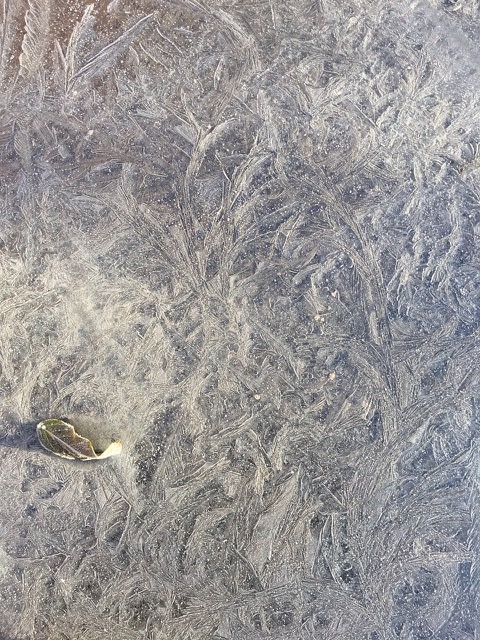In Hoary Winter's Night
On wintry nights when the sky is clear and the air still, Jack Frost creeps across the countryside. His cold breath and icy finger-tips spread frozen tidings through the atmosphere and across the ground. Feathery patterns trespass over window panes, forming fern-like arabesques on their cold, smooth surfaces.
While it is easy to imagine these as the unfurling of some winter’s magic by a mischievous figure of fun, the florid patterns that form on our car windows and glass-topped patio tables are caused by a chain reaction of slowly gelling water. As the spreading frost crystals meet imperfections in the surface such as specks of dirt or scratches, they branch off in new directions forming intricate, wintery patterns that are a joy to discover.
In deepest winter, when the weather is at its most solemn and still, comes the thick, spiny coating of the hoar frost. Trees are silvered; leaves and grasses powdered. The countryside takes on a wintery whiteness that is crisper, more defined than the blanketing softness that comes with a fall of snow.
The name “hoar” derives from the old English word “hor” or “har” for white or grey, and describes the appearance given by the mass of tiny ice crystals which scatter light in all directions so that everything coated with them appears white.
For the crystals to form the conditions have to be just right. If both the air temperature and the dew point (the temperature at which water vapour in air condenses into liquid water) are both below freezing, a process known as sublimation takes place. The moisture in the atmosphere turns from vapour to a solid (ice) without first passing through a liquid stage.
This is all takes place as we sleep, warmly tucked up under our blankets and with our hot water bottles. And when we wake on a wintery morning to the chill of the first frost – to find the windows etched with the tracery of window frost or to gaze at the frozen wonderland created by a hoar frost – we experience one of the season’s most defining moments.



